
LubeLogger is a self-hosted, open-source vehicle service records and maintenance tracker. This container can be very useful if you have an auto repair shop or just to keep track of your car maintenance history. In this step by step guide I will show you how to install LubeLogger on your Synology NAS using Docker and Portainer.
This guide works perfectly with the latest LubeLogger v1.4.9 release.
STEP 1
Please Support My work by Making a Donation.
STEP 2
Install Portainer using my step by step guide. If you already have Portainer installed on your Synology NAS, skip this STEP. Attention: Make sure you have installed the latest Portainer version.
STEP 3
Go to File Station and open the docker folder. Inside the docker folder, create one new folder and name it lubelogger. Follow the instructions in the image below.
Note: Be careful to enter only lowercase, not uppercase letters.
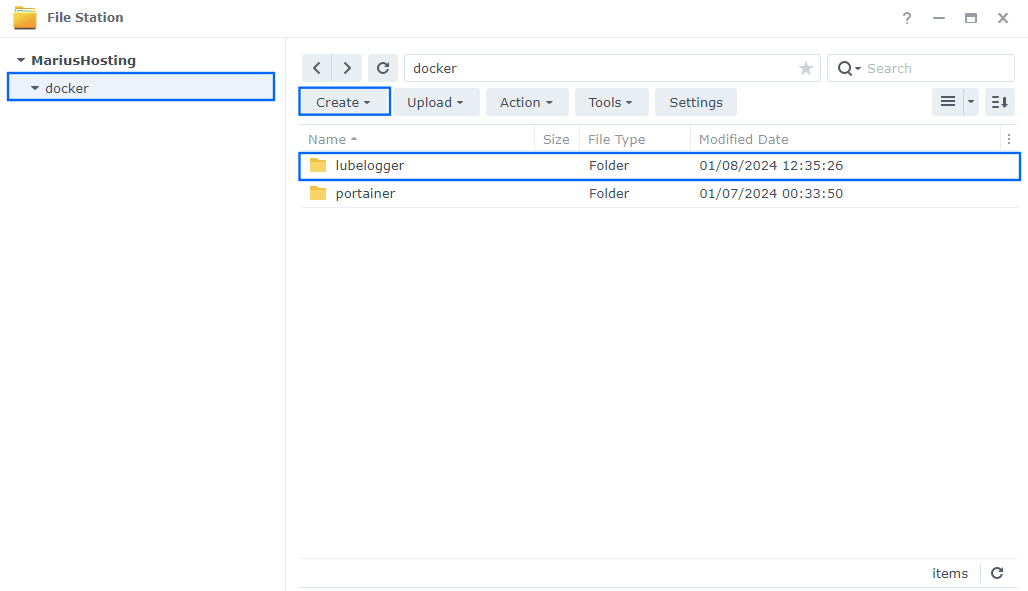
STEP 4
Now create seven new folders inside the lubelogger folder that you have previously created at STEP 10 and name them config, data, documents, images, keys, log, temp. Follow the instructions in the image below.
Note: Be careful to enter only lowercase, not uppercase letters.
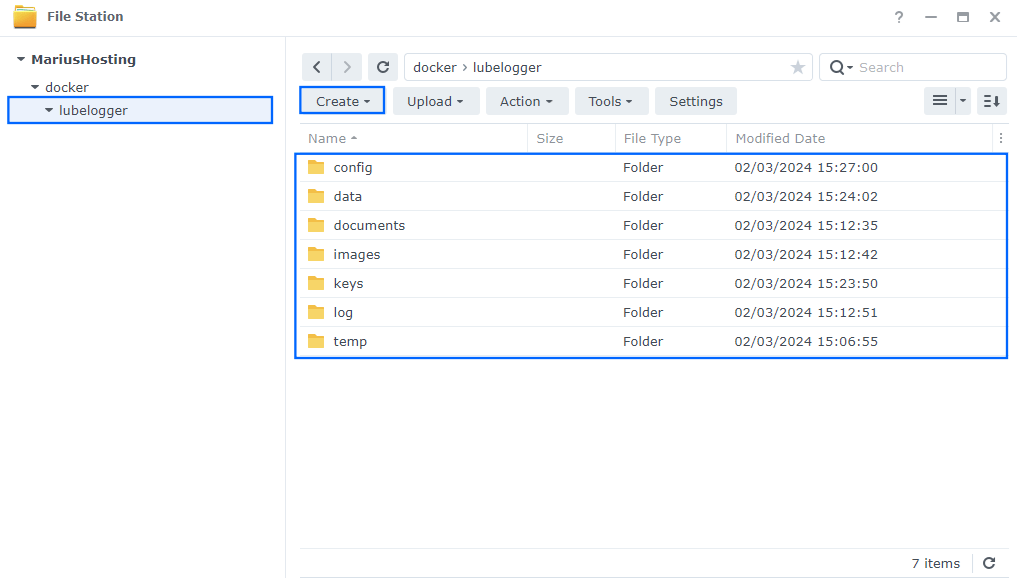
STEP 5
Log into Portainer using your username and password. On the left sidebar in Portainer, click on Stacks then + Add stack. Follow the instructions in the image below.

STEP 6
In the Name field type in lubelogger. Follow the instructions in the image below.
services:
lubelogger:
image: ghcr.io/hargata/lubelogger:latest
container_name: LubeLogger
mem_limit: 4g
cpu_shares: 1024
security_opt:
- no-new-privileges:true
restart: on-failure:5
volumes:
- /volume1/docker/lubelogger/config:/App/config
- /volume1/docker/lubelogger/data:/App/data
- /volume1/docker/lubelogger/documents:/App/wwwroot/documents
- /volume1/docker/lubelogger/images:/App/wwwroot/images
- /volume1/docker/lubelogger/log:/App/log
- /volume1/docker/lubelogger/keys:/root/.aspnet/DataProtection-Keys
- /volume1/docker/lubelogger/temp:/App/wwwroot/temp
ports:
- 8054:8080
env_file:
- stack.env
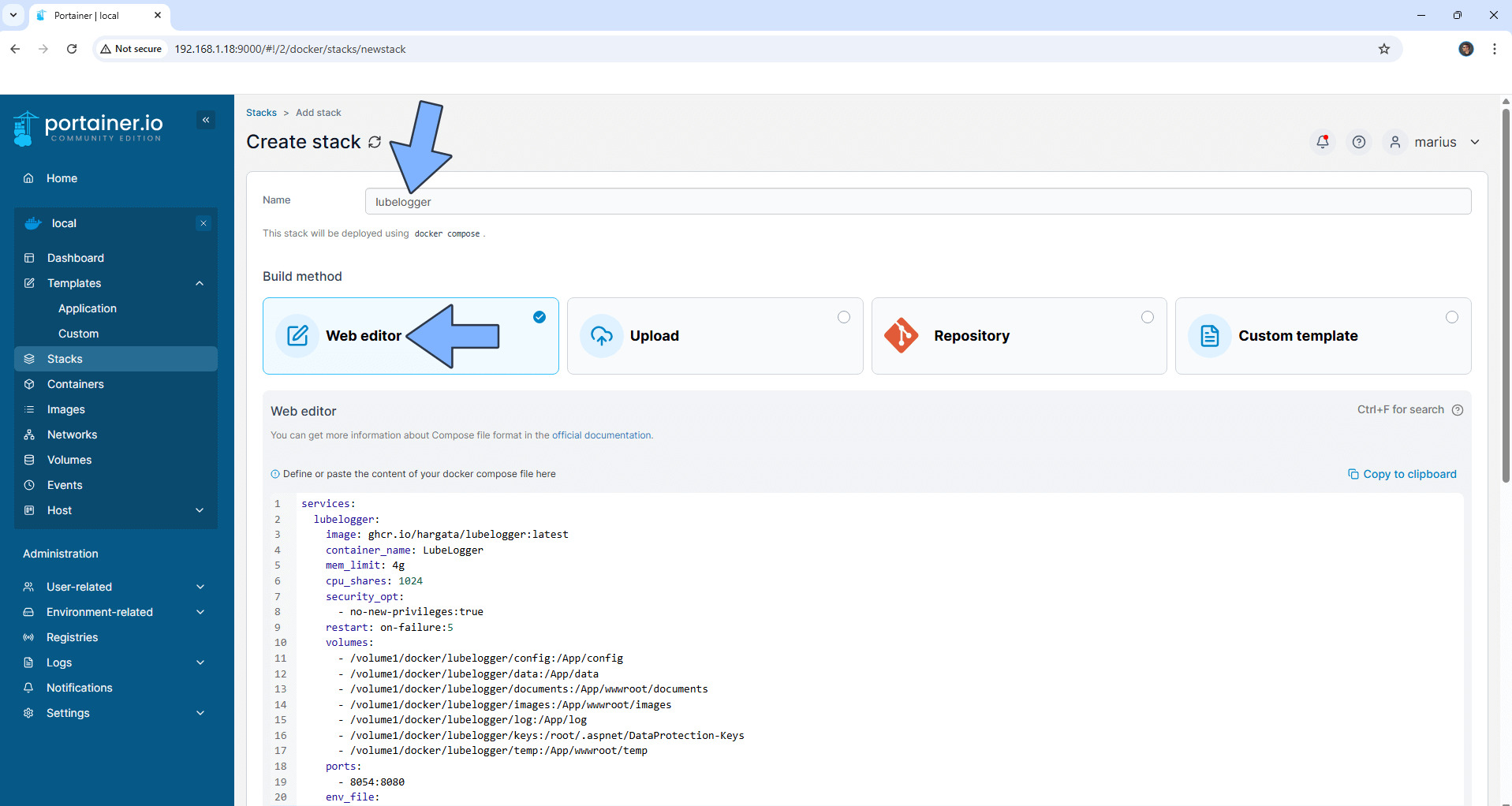
STEP 7
Click the Upload button after Web editor. Download the stack.env file by clicking the blue link below and then upload it from your computer in the “Load variables from .env files“. Follow the instructions in the image below. 🔒Note: Support my work to unlock the password.
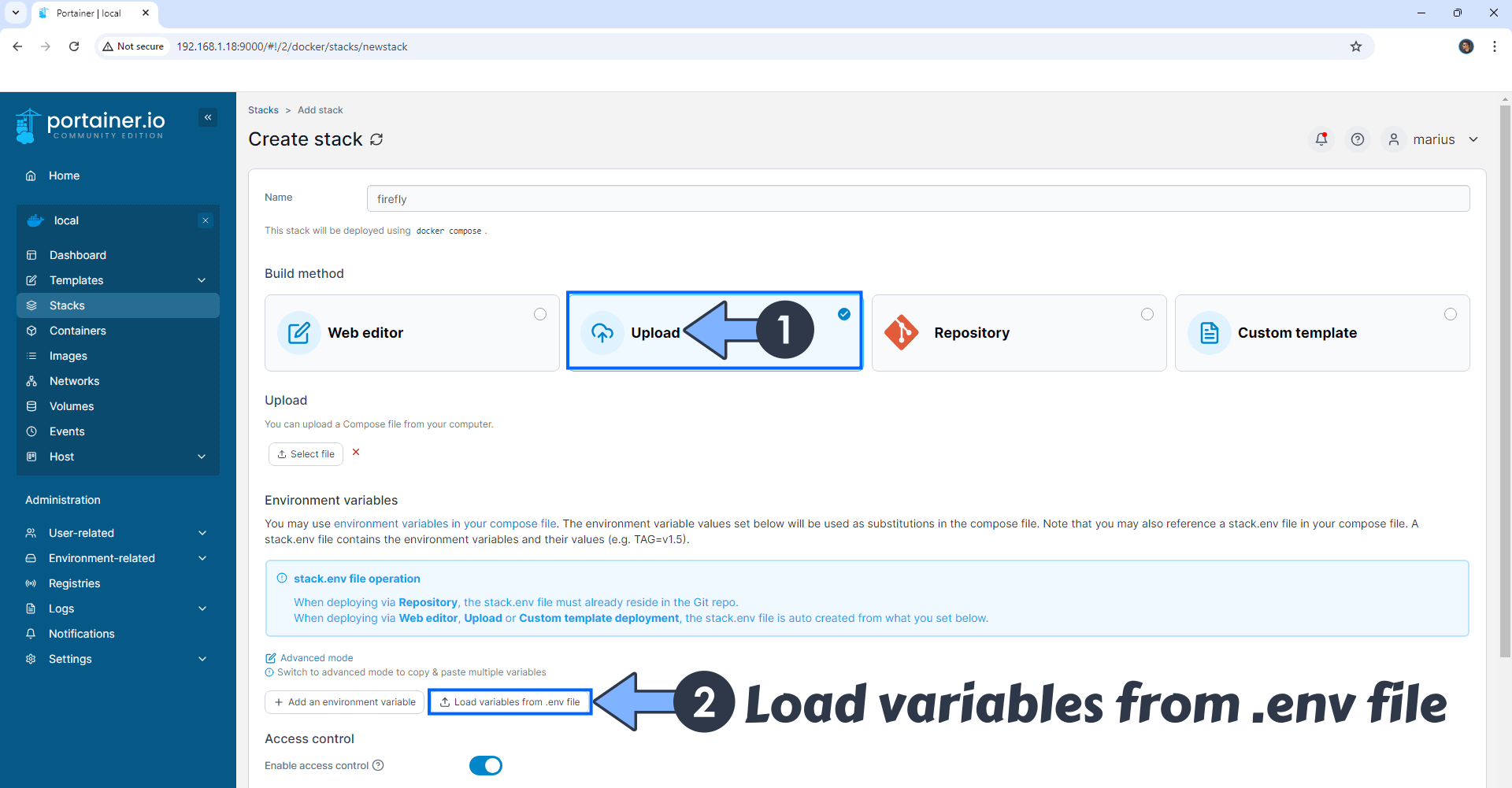
STEP 8
Note: On the Environment variables, change the values for LC_ALL and LANG in case you want to use a different language than the default one. Example de_DE.UTF-8 for German. Check the full country code language list.
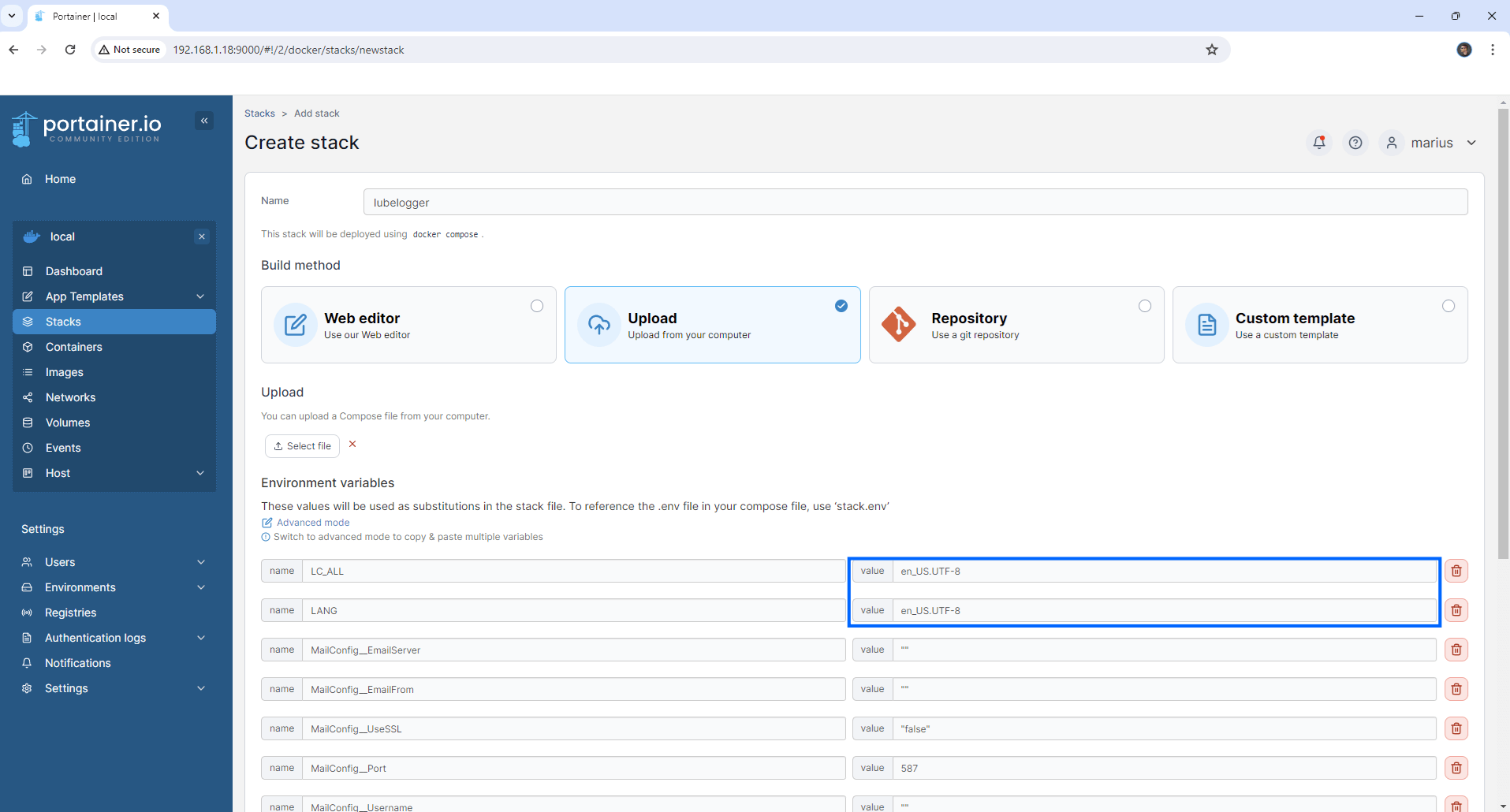
STEP 9
After you make the change, click the Web editor button. Follow the instructions in the image below.

STEP 10
Scroll down on the page until you see a button named Deploy the stack. Click on it. Follow the instructions in the image below. The installation process can take up to a few minutes. It will depend on your Internet speed connection.
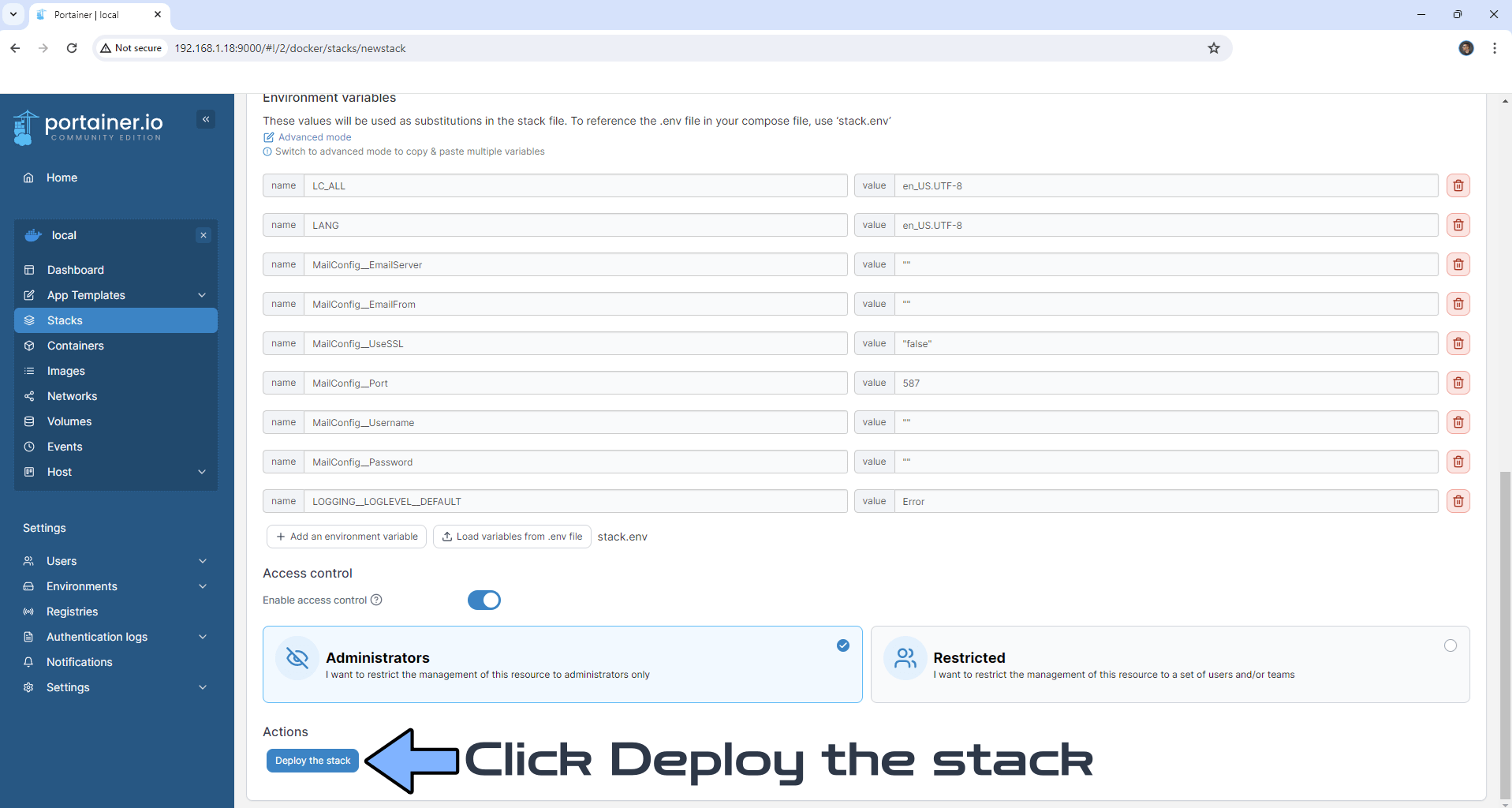
STEP 11
If everything goes right, you will see the following message at the top right of your screen: “Success Stack successfully deployed“.
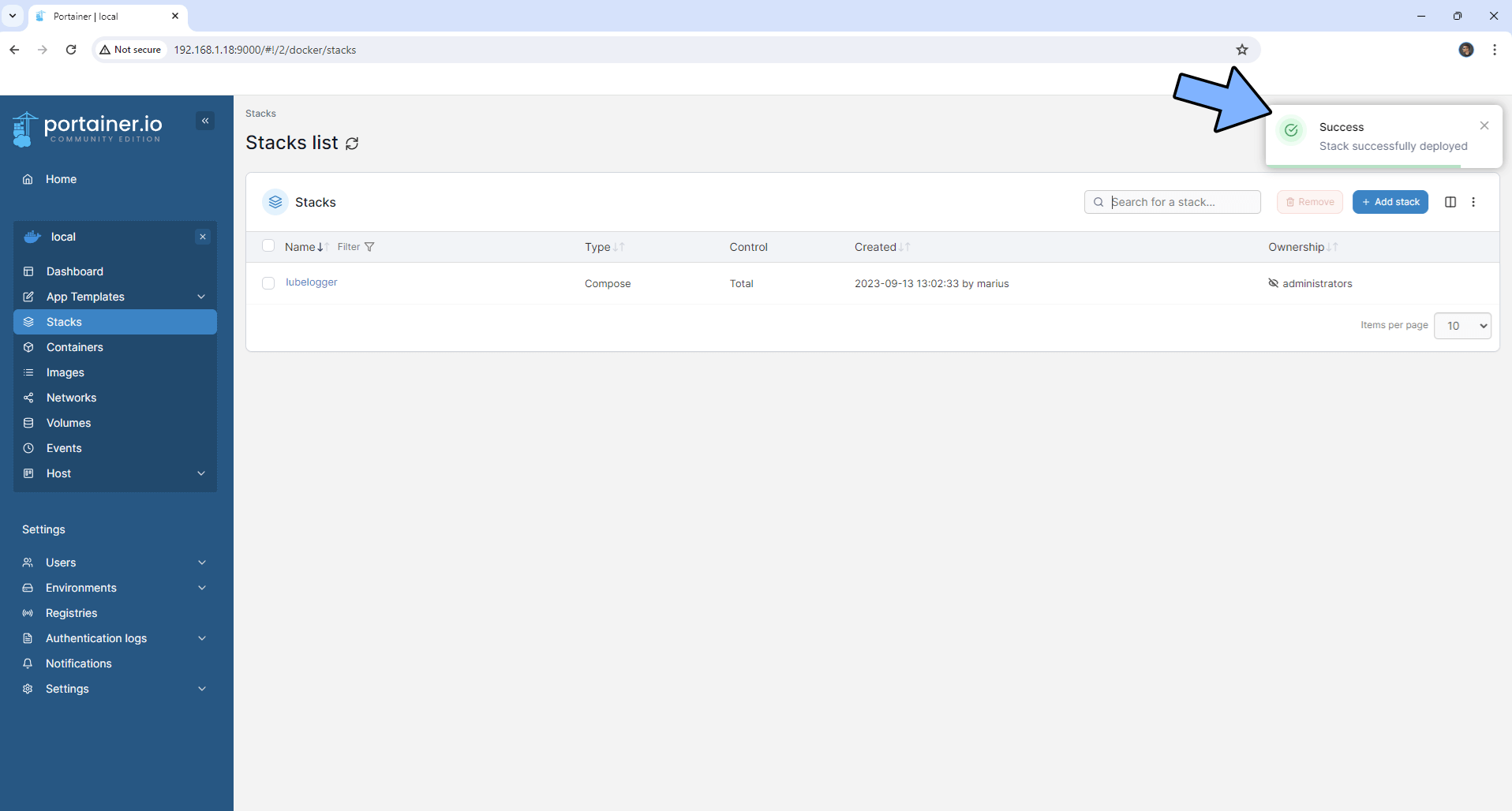
STEP 12
Go back to STEP 1 or you will deal with karma 🙂
STEP 13
The installation process can take up to a few seconds/minutes. It will depend on your Internet speed connection. Now open your browser and type in http://Synology-ip-address:8054 Click Settings to see the Lubelogger settings. Follow the instructions in the image below.
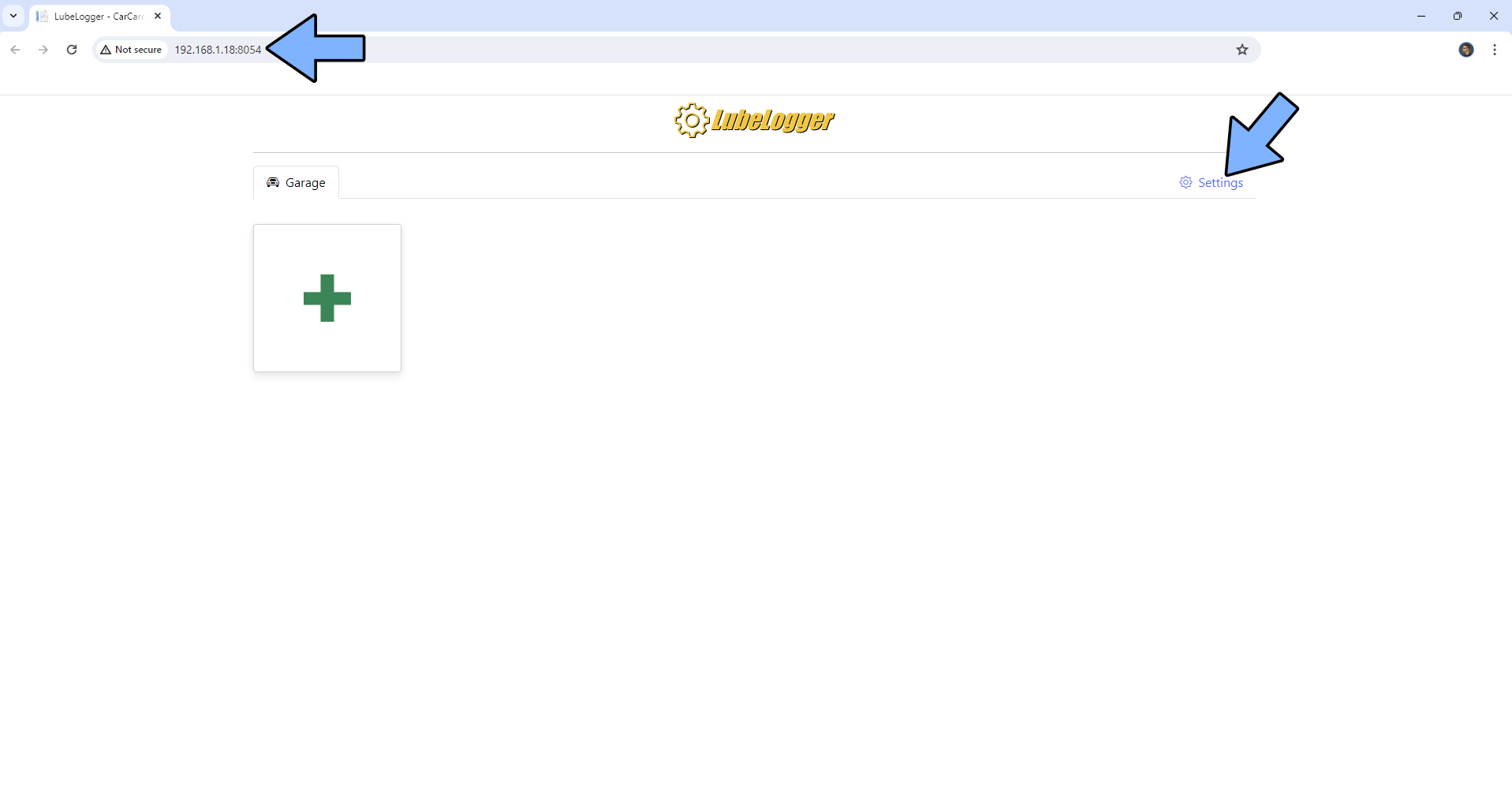
STEP 14
You can switch the theme to Dark Mode and Enable Authentication. Follow the instructions in the image below.
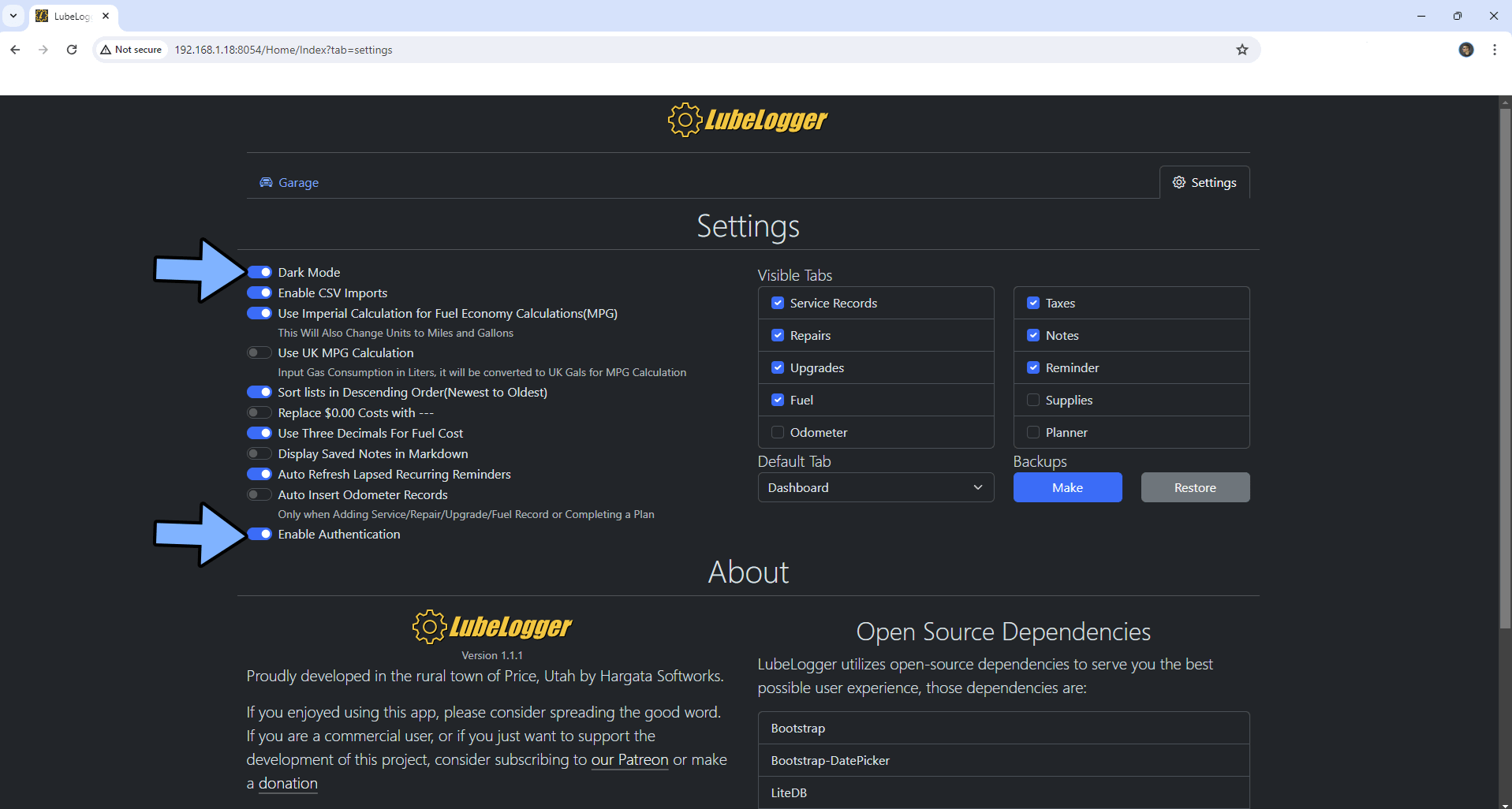
STEP 15
Click the green plus button to add a new vehicle. Follow the instructions in the image below.
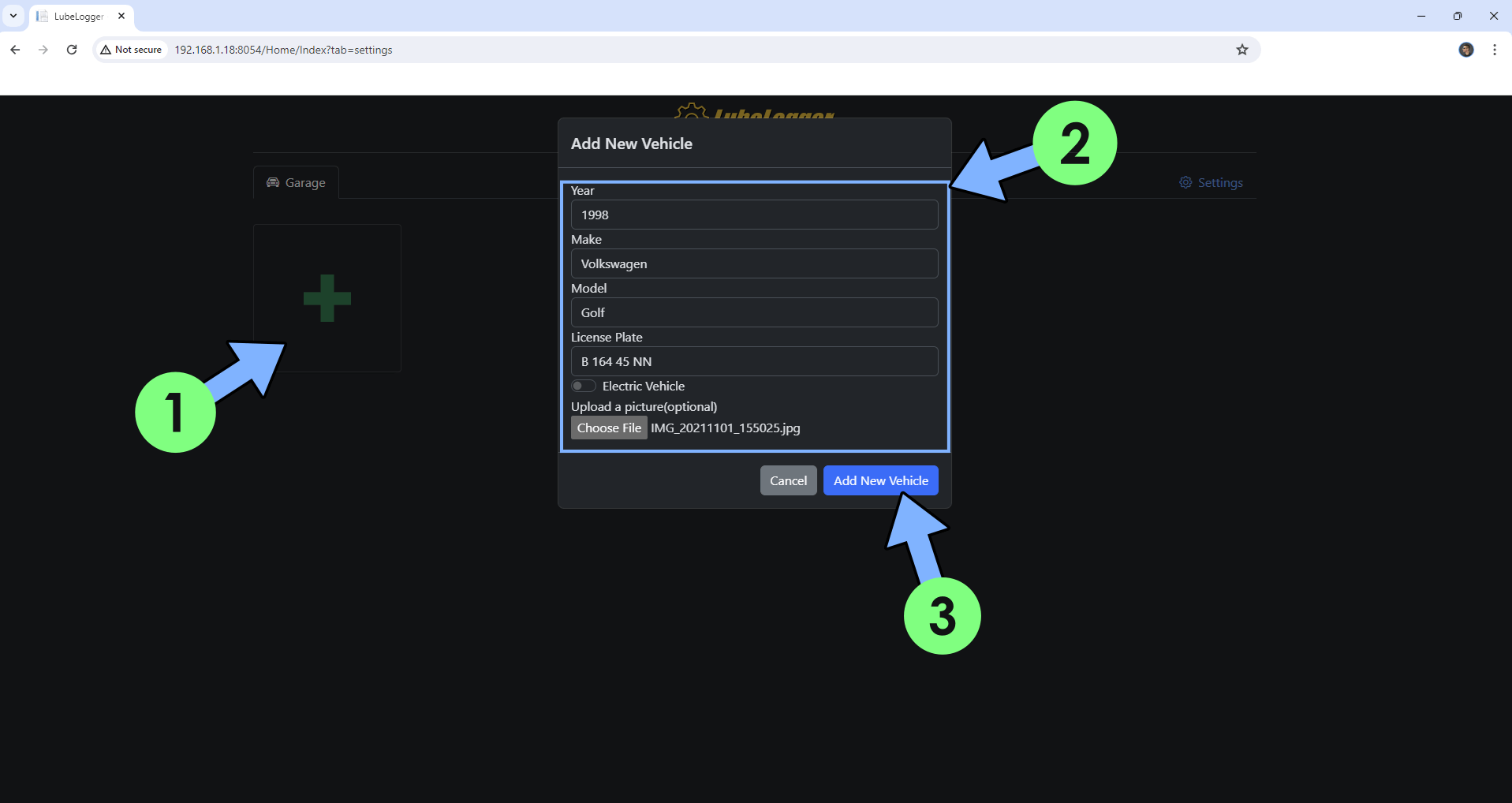
STEP 16
After you have added the Car model, you can click on the image to access the settings for each one of your cars. Follow the instructions in the image below.
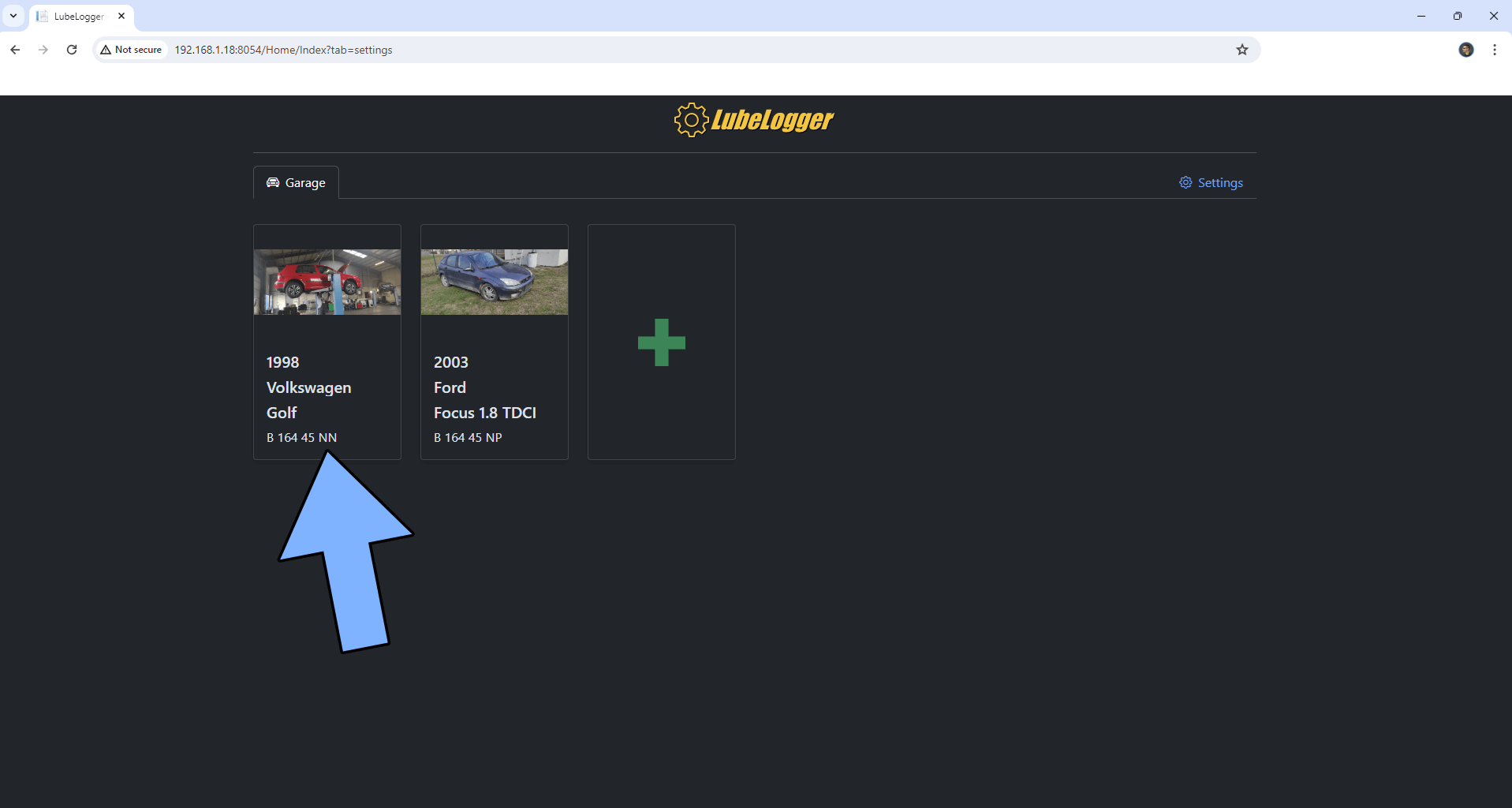
STEP 17
Manage your car maintenance thanks to the multitude of settings that LubeLogger brings at your disposal. Follow the instructions in the image below.
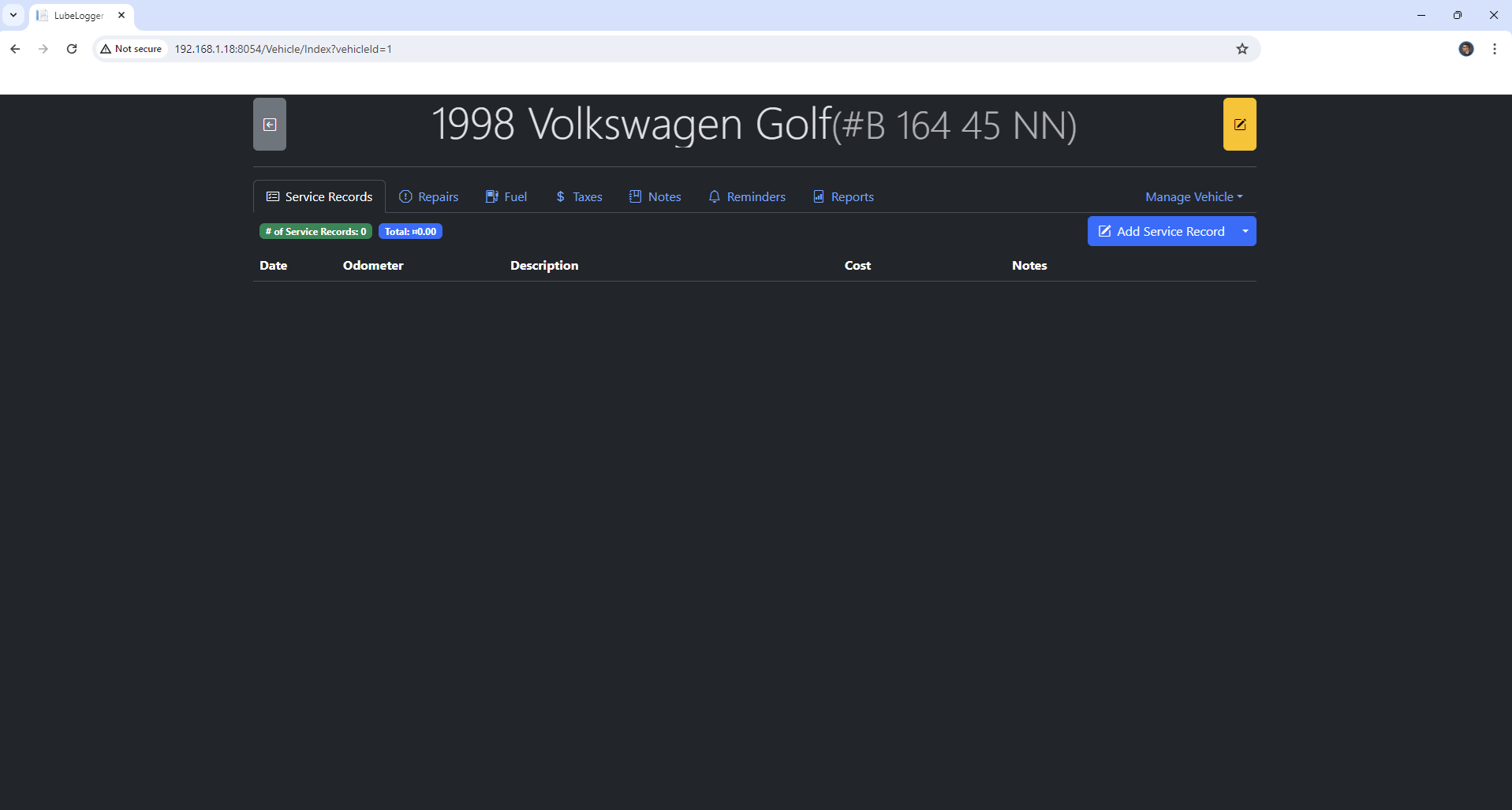
Enjoy LubeLogger!
If you encounter issues by using this container, make sure to check out the Common Docker issues article.
Note: If you want to run the LubeLogger container over HTTPS, check How to Run Docker Containers Over HTTPS. In order to make LubeLogger work via HTTPS, it’s mandatory to activate WebSocket.
Note: Can I run Docker on my Synology NAS? See the supported models.
Note: How to Back Up Docker Containers on your Synology NAS.
Note: Find out how to update the LubeLogger container with the latest image.
Note: How to Free Disk Space on Your NAS if You Run Docker.
Note: How to Schedule Start & Stop For Docker Containers.
Note: How to Activate Email Notifications.
Note: How to Add Access Control Profile on Your NAS.
Note: How to Change Docker Containers Restart Policy.
Note: How to Use Docker Containers With VPN.
Note: Convert Docker Run Into Docker Compose.
Note: How to Clean Docker.
Note: How to Clean Docker Automatically.
Note: Best Practices When Using Docker and DDNS.
Note: Some Docker Containers Need WebSocket.
Note: Find out the Best NAS Models For Docker.
Note: Activate Gmail SMTP For Docker Containers.
This post was updated on Tuesday / July 15th, 2025 at 4:41 PM
